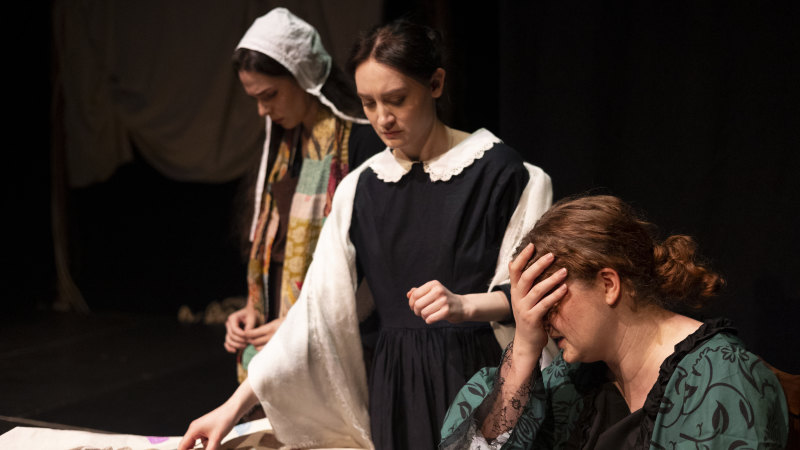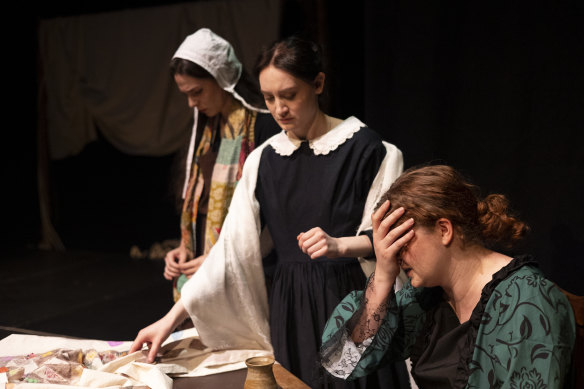Save articles for later
Add articles to your saved list and come back to them any time.
THEATRE
JANE FRANKLIN AND THE RAJAH QUILT
Raffertys Theatre, December 5
Reviewed by KATE PRENDERGAST
★★½
In the early days of the colonisation of Australia, some 12,500 women found themselves far from home. Sentenced in the UK to transportation for mainly petty crimes, they made the long voyage to Van Diemen’s Land, where they were designated domestic workers and “damned whores”.
Not a lot is known about these women. Few traces survive.
However, one notable, beautiful exception is the Rajah Quilt. Measuring a hefty 325cm x 337cm, this appliqued coverlet was the cooperative work of an unknown number of convict women aboard the HMS Rajah in 1841. Its creation was thanks to a British Quaker ladies’ committee, who gave each woman a sewing kit, a skill to economise and a humanising hope.
Little is known about the women who sewed the Rajah Quilt.Credit: Laura Cameron
It was forgotten for a long time but then was acquired by the National Library of Australia in 1989. Playwright Cate Whittaker believes it should be returned to its first home, Tasmania.
Directed by Emma Whitehead, her new play Jane Franklin and the Rajah Quilt succeeds more in awareness-raising for this cause than in storytelling. A moralising historical fiction, weighed down by contextualising detail, it curiously picks up the thread after the condemned craftswomen have disappeared into the colony.
Instead, it focuses on the historical figure of Jane Franklin (Madeleine Withington), who was gifted the quilt as the governor’s wife. A clever woman in a misogynistic world, her “petticoat power” involvement in her devoted husband’s affairs brought about his dismissal.
Though dedicated to Christian values and reform, in Whittaker’s version, it is only after facing the gauntlet of public shame and encountering a headstrong convict maidservant called Betsy, that Jane realises she had been a bit of a patronising snob and naive crusader to those she sought to help.
Sea shanties cue scene changes, harmonised by the NIDA graduate cast. Hannah Anderson gives a standout performance as Betsy, animating the play’s true heroine with credibility, vitality and lip. The fate to which the narrative consigns Betsy (apparently an invented character rather than historical representation) is tragic – and troubling.
We end in a reaffirmation of the unique bond between Mrs and Mr Franklin (the latter would, beyond the pages of the script, die in an expedition), and with the call-to-action: “[the quilt] must be returned…a human tapestry of tragedy, this travesty of transportation.”
There is a great story to unpick here. In this earnest Lost Voices production, we see the threads of it shining through.
The Booklist is a weekly newsletter for book lovers from books editor Jason Steger. Get it delivered every Friday.
Most Viewed in Culture
From our partners
Source: Read Full Article



